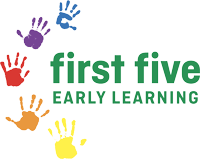The Australian Government is committed to ensuring Australian families can access affordable, flexible and high-quality early education and care. The Government provides subsidies and programs to support the cost of out-of-home care, with the Child Care Subsidy (CCS) most commonly used by families. CCS is paid directly to the centre your child attends, so your out-of-pocket expense is reduced. Families pay the gap fee.
To confirm your eligibility for CCS, visit the Department of Human Services website at https://www.servicesaustralia.gov.au/child-care-subsidy or use the Subsidy Estimate Calculator. Other government funding may be available dependent on your personal circumstances.
At First Five Early Learning, we provide support to walk you through the end-to-end process of how to maximise your benefit. Speak with your Centre Manager to organise a CCS support call with a member of our team at a time convenient to you.
CCS Income Thresholds and Activity levels
2023/24 CCS Family Income Thresholds
Your Family Income | Child Care Subsidy percentage % |
Up to $80,000 | 90% |
More than $80,000 to below $530,000 | Between 90% and 0% |
More than $530,000 | 0% |
Type of Child Care | Hourly Rate cap |
Centre Based Day Care - long day care and occasional care | $12.02 |
ACTIVITY LEVEL
The Australian Government uses a family’s activity level to work: out the number of hours of subsidised child care it can get each fortnight Government look at both parents’ activity and use the parent with the lower hours to determine the level.
Activity hours do not need to coincide with child care hours.
For example, an individual working on the weekend can get CCS for care during the week.
RECOGNISED ACTIVITIES
Families need to do a recognised activity to get CCS.
ACTIVITIES INCLUDE:
- paid work, including being self-employed
- paid or unpaid leave, including parental or maternity leave
- unpaid work in a family business
- training to improve work skills or employment prospects
- an approved course of education or study
- volunteering
- unpaid work experience or internship
- actively setting up a business
- actively looking for work
- recognised activities can be combined to determine the maximum hours of CCS a family can get
THERE ARE FOUR Activity levels
Step | Hours of acitivity per fortnight | Maximum hours of CCS per child, per fortnight |
1 | Less than 8 hours | 0 hours if you earn above $80,000 |
24 hours if you earn $80,000 or below | ||
2 | 8 hours to 16 hours | 36 hours |
3 | More than 16 hours to 48 hours | 72 hours |
4 | More than 48 hours | 100 hours |
* Information provided is correct as of July 2023. For the most up-to-date information, please visit: www.servicesaustralia.gov.au/child-care-subsidy
Parents can include travel time between their child care service and place of work, training, study or other recognised activity.
Families with more than one child in care
Families with children aged five or under in care get a higher subsidy for their second child and younger children.
Who is eligible?
Families may be eligible if they:
- earn less than $362, 408
- have more than one child aged 5 or under in child care.
Who gets the higher subsidy?
Services Australia will work out which children get the higher subsidy by:
- assessing all children in the family unit
- identifying the standard rate child, and
- identifying the higher rate children.
The standard rate child will get the standard CCS subsidy. Younger children get a higher subsidy.
The standard rate child is usually the eldest child in the family unit. However, it could be another child depending on when children were enrolled in care.
How much will younger children get?
Eligible higher rate children receive a 30% higher subsidy, up to a maximum 95%.
Families will receive their income tested CCS rate for all children. Children eligible for the higher CCS rate will have the increase automatically included in their CCS percentage reported to services.
Eligibility for the higher subsidy rate
If the government believe there is no intention for a child to use child care they will end a child’s CCS eligibility. If a child starts to attend care again, a family can lodge a new claim for CCS.
A child who has not attended care for 26 consecutive weeks will not be eligible for CCS.
If a standard rate child’s CCS eligibility ends, Services Australia will reassess all other children in the family unit to determine the new standard rate child and new subsidy rates.
Families should contact Services Australia if their circumstances change, especially if their standard rate child’s CCS eligibility ends
Child Care Subsidy Changes Introduced in July 2023
If your family earns under $530,000, you will receive increased Child Care Subsidy. The CCS percentage you are entitled to depends on your family’s income. The income limit to get the maximum CCS is increasing. Families earning up to $80,000 will receive an increased maximum CCS amount, from 85% to 90%. If you already receive CCS, you don’t need to do anything to have the increased rate applied. We will apply changes to your CCS automatically. Read more about cheaper child care measures on the Department of Education website.
Subsidy rates for second and younger children
Child Care Subsidy (CCS) is changing. From July 2023 most families using child care will get more CCS.
Families earning below $362,408 with more than one child aged 5 or under in care can still get a higher rate for their second and younger children when the changes occur on 10 July.
The higher rate for second and younger children will end when a family earns $362,408 or more. All children will then receive the standard CCS rate (As outlined above).
Please refer to this government factsheet for more information.
For the most recent updated information, click on this link to read further details: Full Details Child Care Subsidy Changes 2023
Other changes that may be relevant to you:
- Child Care Subsidy activity test changes for Aboriginal and Torres Strait Islander children
- Grandparent Advisers renamed and expanded
- Paid Parental Leave scheme changes
LEARN MORE
Three criteria determine a family’s level of Child Care Subsidy:
- A family’s annual adjusted taxable income determines the percentage of subsidy for which they are eligible
- An activity test determines how many hours of subsidised care families can access, up to a maximum of 100 per fortnight, and
- The type of childcare service will determine the hourly rate cap.
More information about individual subsidy rates and annual cap changes is available on the Services Australia Website. Basic requirements must be satisfied for an individual to be eligible to receive Child Care Subsidy for a child. These include:
- The age of the child (must be 13 or under and not attending secondary school)
- The child meeting immunisation requirements, and
- The individual, or their partner, meeting the residency requirements.
We offer session times (9-hour, 10-hour or full-day) to ensure you can make the most of your eligible hours. Please speak to your Centre Manager for further information.
What if my child is sick?
We follow the recommendations outlined in the Australian Government Staying Healthy Book (5th ed.). Here are some helpful tips to know when to keep your child home from care.
- Children aged below 1 year have a temperature above 37.7
- Children aged 2-5 years have a temperature above 37.2, and
- Children are experiencing illness including vomiting, diarrhea, mouth sores and conjunctivitis.
Queensland Health provides a useful Time Out poster for your reference: Time Out poster – keeping your child and other kids healthy
Do I still pay for a scheduled day if my child is sick?
Yes, fees still apply for sick days. The Child Care Subsidy will cover up to 42 absence days a year with no documentation and unlimited sick days if you’re able to provide a medical certificate or similar. Note: The 2023-23 financial year has increased to 52 allowable absences due to Covid-19. For more information on allowable absences, please visit CCS – When your child is absent.
What happens if my scheduled day falls on a public holiday?
Our centres close for public holidays and normal fees do apply where your child’s normal booked day falls on a public holiday. For further information, please speak to your Centre Manager.
What happens when we go on holidays?
Normal fees apply for all absences that fall on a usual day of attendance. However, First Five Early Learning offers a holiday discount to eligible families for up to four weeks pro rata of care per financial year. Please note families need to provide written notification four weeks in advance to apply the holiday discount. Fee payments need to be up-to-date to receive the holiday discount.
Family Resource Library
Activity test – Department of Education, Skills and Employment, Australian Government (dese.gov.au)
https://www.servicesaustralia.gov.au/individuals/services/centrelink/child-care-subsidy
CCS Videos
https://www.youtube.com/watch?v=Xhopc89SfC0&list=RDCMUCg5fHRiVL9fvAgQ-OP2FyHw
https://www.youtube.com/watch?v=aWAkxYlGYe0
https://www.youtube.com/watch?v=03tZM0DUIMk
https://www.youtube.com/watch?v=25pliqXBqoo&list=RDCMUCg5fHRiVL9fvAgQ-OP2FyHw&index=2
https://www.youtube.com/watch?v=A5uHD0ULIAk&list=RDCMUCg5fHRiVL9fvAgQ-OP2FyHw&index=3
https://www.youtube.com/watch?v=D1GcU0VWUwc&list=RDCMUCg5fHRiVL9fvAgQ-OP2FyHw&index=1



